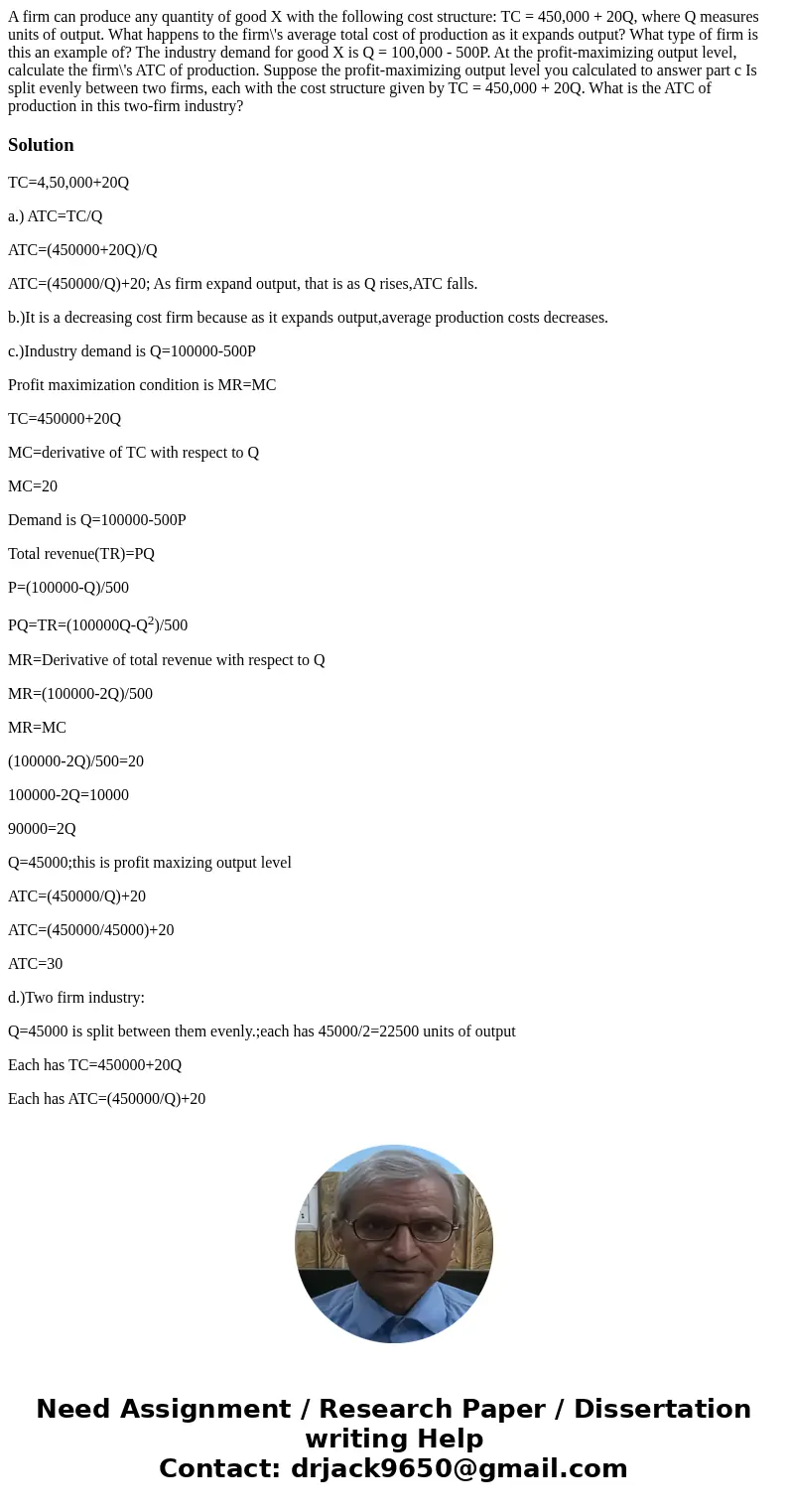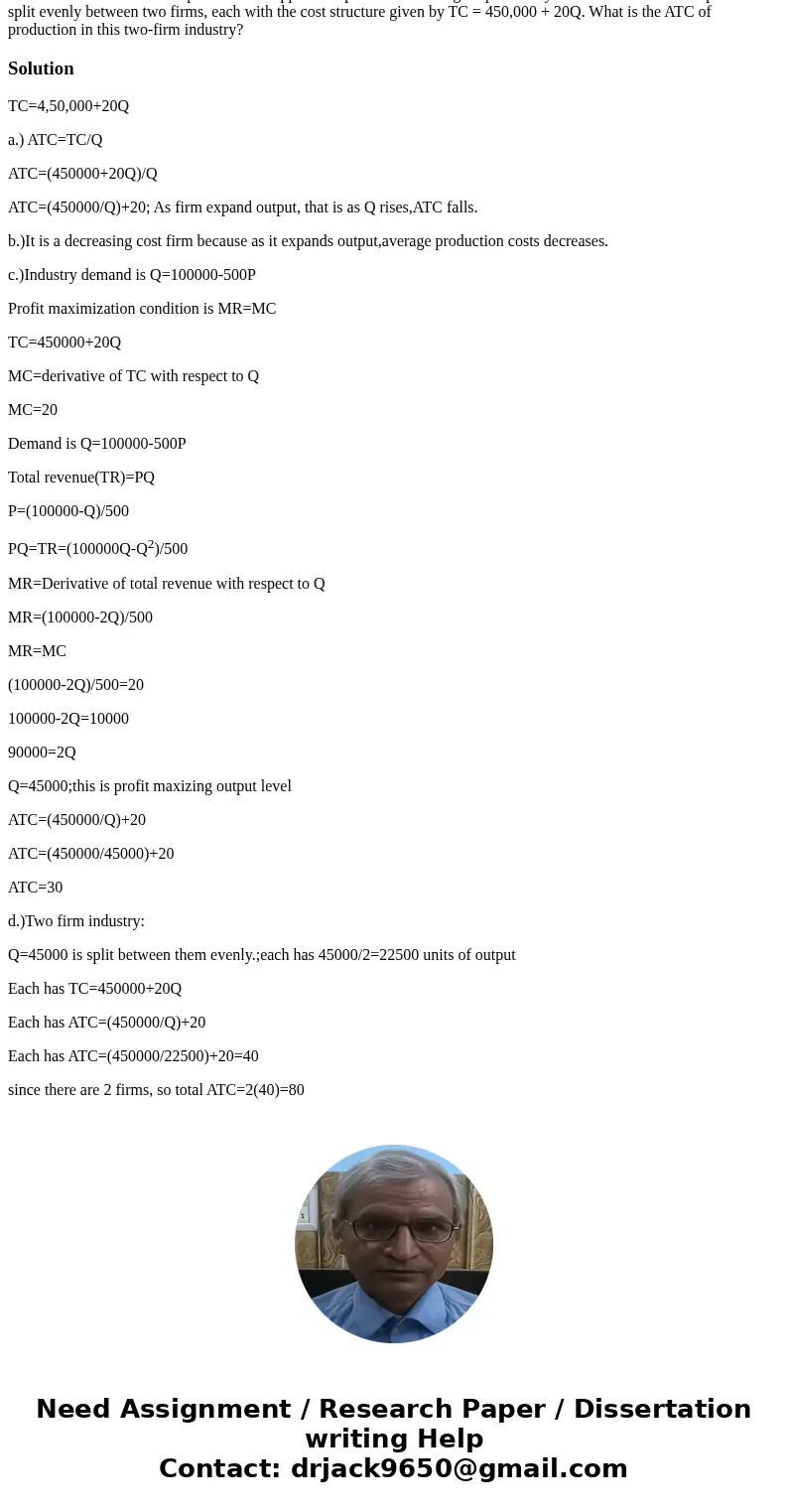A firm can produce any quantity of good X with the following
Solution
TC=4,50,000+20Q
a.) ATC=TC/Q
ATC=(450000+20Q)/Q
ATC=(450000/Q)+20; As firm expand output, that is as Q rises,ATC falls.
b.)It is a decreasing cost firm because as it expands output,average production costs decreases.
c.)Industry demand is Q=100000-500P
Profit maximization condition is MR=MC
TC=450000+20Q
MC=derivative of TC with respect to Q
MC=20
Demand is Q=100000-500P
Total revenue(TR)=PQ
P=(100000-Q)/500
PQ=TR=(100000Q-Q2)/500
MR=Derivative of total revenue with respect to Q
MR=(100000-2Q)/500
MR=MC
(100000-2Q)/500=20
100000-2Q=10000
90000=2Q
Q=45000;this is profit maxizing output level
ATC=(450000/Q)+20
ATC=(450000/45000)+20
ATC=30
d.)Two firm industry:
Q=45000 is split between them evenly.;each has 45000/2=22500 units of output
Each has TC=450000+20Q
Each has ATC=(450000/Q)+20
Each has ATC=(450000/22500)+20=40
since there are 2 firms, so total ATC=2(40)=80


 Homework Sourse
Homework Sourse